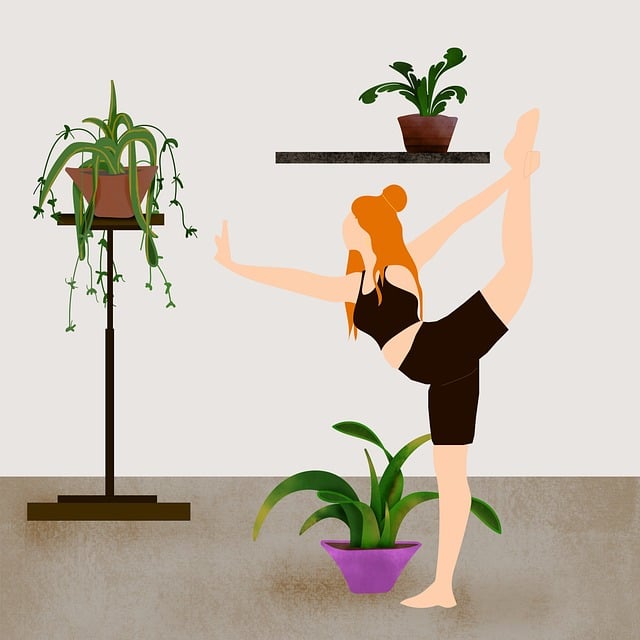
Hello there! If you’re reading this, chances are you’ve been dealing with that nagging lower back pain that just doesn’t seem to go away and you’re looking into home physiotherapy. As a home physiotherapist who’s spent years helping folks in rural and city areas, I understand how debilitating lower back pain can be. But don’t worry; there’s hope! I’m here to share some simple yet effective home exercises that can help alleviate your pain and get you back to enjoying life.
Understanding Lower Back Pain
Causes of Lower Back Pain
Lower back pain is something that many of us experience at some point in our lives. It can be caused by a variety of factors. For instance, spending long hours working in the garden or lifting heavy objects can strain your back muscles. My neighbour, Mr. Johnson, who’s been farming for decades, often complained about his back pain after a long day in the fields. It’s a common story, but the good news is that it’s manageable.
Symptoms and When to Seek Medical Advice
Most lower back pain is due to muscle strain or poor posture. However, if you experience severe pain, numbness, or loss of bladder control, it’s essential to seek medical advice immediately. My aunt once ignored her severe back pain, thinking it was just the usual strain. It turned out to be a herniated disc, which needed medical intervention. So, always listen to your body!
Benefits of Home Exercises
Physical Benefits
Doing regular home exercises can strengthen your core muscles, improve your flexibility, and reduce stiffness. When I first started incorporating these exercises into my routine, I noticed a significant improvement in my mobility and overall back health. It’s like giving your body the tune-up it needs to keep running smoothly.
Mental and Emotional Benefits
Exercise isn’t just good for the body; it’s great for the mind too. It can reduce stress and improve your mental well-being. After a session of stretching and strengthening exercises, I always feel more relaxed and less tense. It’s a fantastic way to boost your mood and confidence.
Preparation Before Exercising
Creating a Safe Exercise Environment
Before you start, make sure you have a safe and clutter-free space. This could be your living room, a porch, or even a flat area in your Norfolk yard. Wear comfortable clothing and supportive shoes to prevent any slips or falls.
Warm-Up Routine
Warming up is crucial to prevent injuries. A simple warm-up could include marching in place or doing some gentle stretching. Think of it as preparing your muscles for the work ahead. I always start with a few minutes of light activity to get my blood flowing.
Simple Home Exercises for Lower Back Pain
1. Pelvic Tilts
Pelvic tilts are a great way to strengthen your lower back and abdominal muscles.
How to do it:
- Lie on your back with your knees bent and feet flat on the floor.
- Tighten your abdominal muscles and press your lower back into the floor.
- Hold for a few seconds, then relax.
I remember showing this exercise to Mrs. Green, who was skeptical at first. After a few weeks, she noticed her back pain had significantly reduced.
2. Cat-Cow Stretch
This yoga-inspired stretch is fantastic for increasing spinal flexibility and easing tension in your lower back.
How to do it:
- Get on your hands and knees.
- Arch your back (cat position), then dip it down (cow position).
- Move slowly and breathe deeply.
My mornings always start with a few rounds of this stretch. It’s a great way to wake up your spine!
3. Knee-to-Chest Stretch
This stretch helps relieve tension in your lower back.
How to do it:
- Lie on your back with your knees bent.
- Bring one knee to your chest, keeping the other foot on the floor.
- Hold for 20 seconds, then switch legs.
I showed this stretch to my friend, who’s an avid hiker. He swears by it now, especially after long hikes on the Norfolk and Suffolk coastlines.
4. Bridge Exercise
Bridges are excellent for strengthening your gluteal muscles and lower back.
How to do it:
- Lie on your back with your knees bent and feet flat on the floor.
- Lift your hips towards the ceiling, hold for a few seconds, then lower them back down.
After including bridges in my routine, I noticed my posture improved significantly, which helped reduce my back pain.
5. Bird-Dog Exercise
This exercise enhances balance, stability, and core strength.
How to do it:
- Get on your hands and knees.
- Extend one arm and the opposite leg, hold for a few seconds, then switch.
I recommended this exercise to my cousin, who’s a carpenter. It’s helped him with his balance and stability during his daily tasks.
6. Child’s Pose
This is a relaxing stretch that also helps stretch your lower back.
How to do it:
- Kneel on the floor, sit back on your heels, and stretch your arms forward on the ground.
- Hold this position for a minute.
I end all my exercise sessions with the child’s pose. It’s a fantastic way to wind down and relax.
Tips for Effective Exercise
Consistency and Patience
Consistency is key to seeing results. It’s important to set realistic goals and be patient. When I started, I didn’t see immediate results, but over time, my persistence paid off.
Listening to Your Body
Always listen to your body. If an exercise causes pain, stop immediately. Modify the exercise or consult a professional. It’s better to be safe than sorry.
Lifestyle Tips for Lower Back Health
Posture and Ergonomics
Good posture is crucial in preventing back pain. Ensure you’re sitting and standing correctly, especially during daily activities. I have a friend, who’s a lorry driver, who noticed a huge difference in his back pain after adjusting his seat and using a lumbar support cushion.
Healthy Habits
Maintain a balanced diet, stay hydrated, and get enough sleep. These healthy habits contribute to overall well-being and can help reduce back pain. Reducing stress through activities like meditation or spending time in nature can also be beneficial.
Conclusion
To sum up, incorporating these simple home exercises into your daily routine can help alleviate lower back pain and improve your overall quality of life. Remember, consistency and patience are key. Always listen to your body and make adjustments as needed. If you’re ever in doubt, consult a professional.
By taking these steps, you’ll be on your way to a healthier, pain-free back. So, why wait? Start today and feel the difference for yourself!
